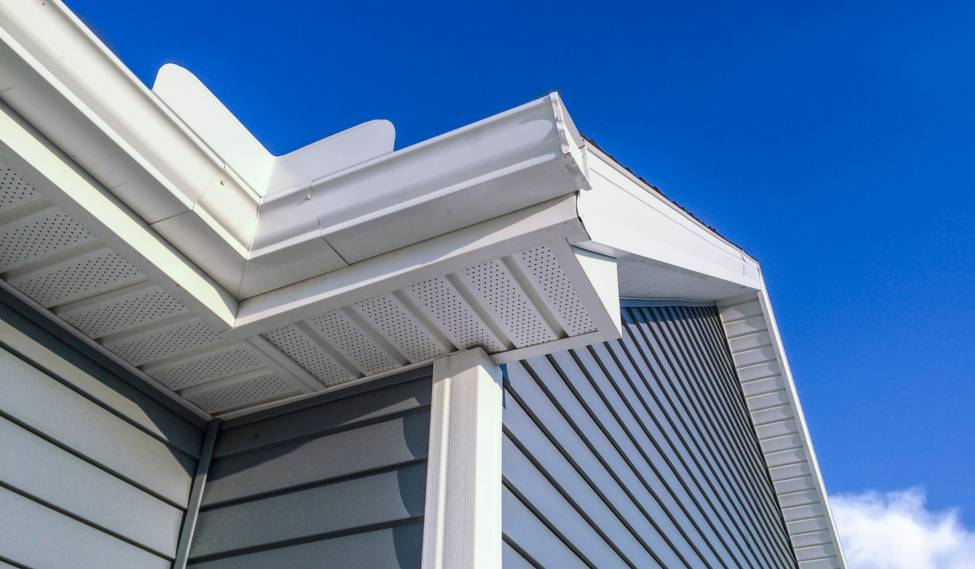When it comes to the exterior of your home, choosing the right siding can make a significant impact on both its appearance and functionality. While there are various types of siding materials available, one option that has been gaining popularity in recent years is vertical wood siding. This type of siding, also known as board and batten siding, involves installing wide boards vertically on the exterior walls of a house, with narrow battens covering the seams in between.
Despite its traditional roots, vertical wood siding offers a modern and sleek aesthetic that can enhance the curb appeal of any home. Beyond its visual appeal, this siding option also boasts a range of benefits that make it a practical choice for homeowners. In this article, we will delve into the advantages of vertical wood siding and explore why it may be the perfect choice for your home’s exterior. From its durability and insulation properties to its low maintenance requirements, we will uncover how vertical wood siding can elevate the look and functionality of your home.
Durable and Long-Lasting Option For Exterior
Vertical wood siding is a highly durable and long-lasting option for enhancing the exterior of your home. Its longevity can be attributed to the natural properties of wood, coupled with the vertical orientation of the siding. This design ensures better water drainage and minimizes the potential for moisture retention, which can lead to rot and decay. Additionally, wood siding is known for its strength and resistance to impact, making it a reliable choice for withstanding harsh weather conditions and potential damage from falling debris. The durability of vertical wood siding not only ensures the longevity of your home’s exterior but also provides an aesthetically pleasing and timeless look that can enhance the overall curb appeal of your property.

Provides a Unique and Timeless Look
Vertical wood siding offers more than just durability and protection for your home’s exterior. One of its standout features is the unique and timeless look it provides. The vertical orientation of the wood planks creates a visually striking effect, adding depth and character to the facade of your home. This classic design choice has stood the test of time and continues to be a popular option among homeowners seeking a sophisticated and distinctive aesthetic. Whether you prefer a rustic, traditional, or modern style, vertical wood siding can be customized to suit your personal taste and architectural preferences, ensuring that your home stands out in the neighborhood while maintaining its timeless appeal.
Low Maintenance and Easy To Clean
Vertical wood siding not only enhances the appearance of your home’s exterior, but it also offers the practical advantage of being low maintenance and easy to clean. Unlike other siding materials that may require frequent painting or sealing, vertical wood siding is naturally resistant to rot and decay with proper installation and maintenance. Its vertical orientation also allows water to easily run off, reducing the chances of moisture accumulation and potential damage.
Additionally, cleaning vertical wood siding is a breeze; a simple annual wash with mild detergent and water can effectively remove dirt, grime, and any other stains, keeping your siding looking fresh and vibrant for years to come. With its combination of beauty and low maintenance, vertical wood siding proves to be a durable and hassle-free choice for homeowners seeking both aesthetic appeal and practical functionality.
Can Increase Energy Efficiency
Vertical wood siding can also contribute to increased energy efficiency in your home. The natural insulating properties of wood help to regulate temperature, keeping your home cooler in the summer and warmer in the winter. The vertical orientation of the siding creates a barrier between your home’s interior and the outdoor elements, reducing heat transfer and preventing drafts. This can result in significant energy savings by decreasing dependency on heating and cooling systems. Additionally, the use of sustainable wood materials in vertical wood siding promotes eco-friendly practices and contributes to a greener environment. By choosing vertical wood siding for your home’s exterior, you can enjoy the benefits of both enhanced energy efficiency and a visually appealing facade.
Adds Value to Your Home
Vertical wood siding is not just aesthetically pleasing and energy-efficient, but it also adds significant value to your home. The timeless appeal of wood siding creates a sense of warmth and character, instantly boosting the curb appeal of your property. Potential buyers are often drawn to the natural beauty and durability of vertical wood siding, making it a desirable feature in the real estate market. Additionally, the longevity and low maintenance requirements of wood siding ensure that its value remains intact over time. Whether you plan to sell your home in the future or simply want to increase its overall worth, investing in vertical wood siding is a smart choice that can yield a high return on investment.
Conclusion
In conclusion, vertical wood siding offers a multitude of benefits for your home’s exterior. Not only does it provide a unique and visually appealing look, but it also offers superior protection against the elements and can increase the value of your home. With its durability, versatility, and low maintenance requirements, vertical wood siding is a smart and practical choice for any homeowner looking to upgrade their home’s exterior. Consider incorporating this timeless and functional siding option into your next home renovation project.
FAQ
What are the main advantages of using vertical wood siding for the exterior of your home?
Vertical wood siding offers several advantages for the exterior of a home. Firstly, it provides a unique and visually appealing look, adding character and charm to the overall design. Additionally, vertical siding can help create the illusion of height, making a smaller home appear taller. It also offers better resistance against moisture, as the vertical orientation helps to shed water more effectively, reducing the risk of water damage and rot. Furthermore, vertical wood siding is often more durable and requires less maintenance compared to other siding materials. Overall, it offers a combination of aesthetic appeal, functional benefits, and longevity for homeowners.
How does vertical wood siding compare to other types of siding in terms of durability and longevity?
Vertical wood siding is generally considered to be durable and long-lasting. It can withstand a variety of weather conditions and is resistant to rot and decay when properly maintained. However, compared to other types of siding such as vinyl or fiber cement, wood siding may require more regular maintenance and refinishing to maintain its durability and longevity. Factors such as the quality of the wood, installation techniques, and climate can also affect the lifespan of vertical wood siding. Overall, while vertical wood siding is a popular and attractive choice, it may require more upkeep compared to other siding options for optimal durability and longevity.
What are the potential cost savings associated with using vertical wood siding?
Using vertical wood siding can lead to potential cost savings in several ways. First, vertical siding requires less material compared to horizontal siding, reducing the overall cost of the siding project. Additionally, vertical siding can be easier and quicker to install, saving on labor costs. It also provides better water drainage, reducing the risk of water damage and potential repair costs in the future. Furthermore, vertical siding can offer better thermal insulation, helping to lower heating and cooling expenses. Lastly, vertical wood siding is typically more durable and long-lasting, reducing the need for frequent repairs or replacements.
Can vertical wood siding improve the energy efficiency of your home?
No, vertical wood siding on its own does not directly improve the energy efficiency of a home. Energy efficiency is primarily influenced by factors such as insulation, windows, and sealing. While wood siding can provide some insulation value, it is usually minimal compared to other insulation materials. However, if combined with proper insulation and sealing techniques, vertical wood siding can contribute to overall energy efficiency by helping to maintain a consistent indoor temperature and reducing air leakage. It is important to consider the entire building envelope and implement multiple energy-efficient strategies for optimal results.
Are there any specific maintenance requirements or considerations when using vertical wood siding?
Yes, there are specific maintenance requirements and considerations when using vertical wood siding. Vertical wood siding is more prone to water damage compared to horizontal siding, so it is important to regularly inspect for any signs of moisture or rot. Proper sealing and painting of the siding can help protect against moisture and UV damage. It is also recommended to periodically clean the siding with a mild detergent and water to prevent dirt and debris buildup. Regular maintenance, such as resealing or repainting, may be necessary every few years to maintain the integrity and appearance of the siding.







Join The Discussion